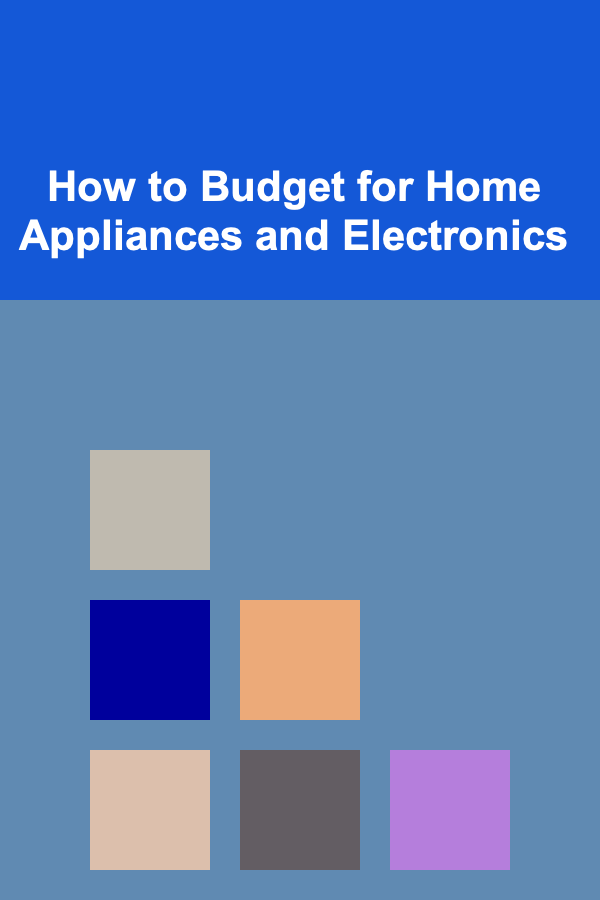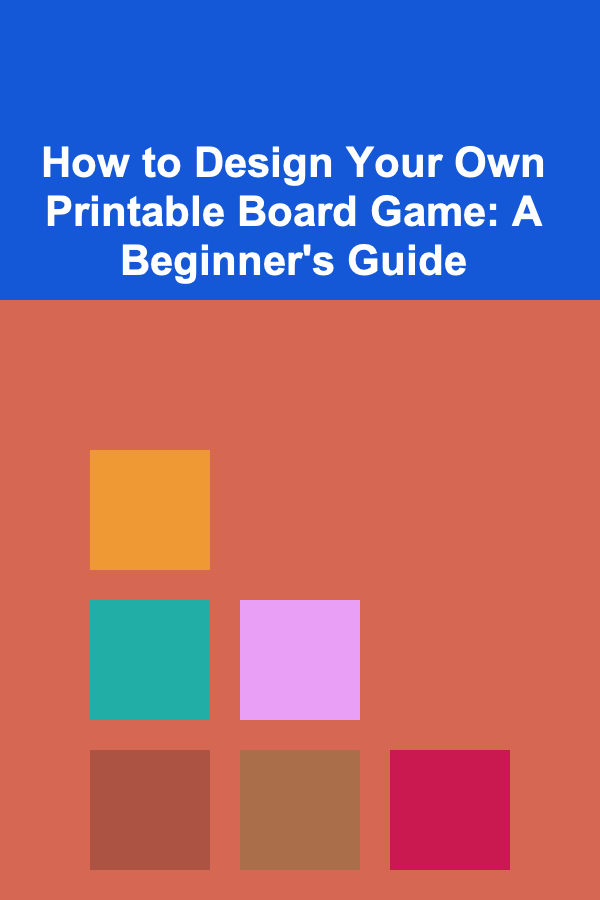
How to Use Your Artist Planner for Goal Setting and Accountability
ebook include PDF & Audio bundle (Micro Guide)
$12.99$9.99
Limited Time Offer! Order within the next:

Creating art is an inspiring and personal journey. Yet, as an artist, staying motivated and focused on your goals can often be a challenge. Whether you're working on personal projects, commissions, or honing your craft, it's easy to lose track of time, direction, and the sense of progress. One of the most effective tools to help you stay on track is an artist planner. A well-structured planner not only helps you organize your tasks but also empowers you to set meaningful goals, track your progress, and hold yourself accountable. In this article, we'll explore how to use your artist planner for goal setting and accountability.
Why Use an Artist Planner?
Artists, regardless of their medium or style, often juggle multiple projects, deadlines, and ideas. Having a dedicated planner designed for creatives can help you:
- Organize your time: A planner allows you to allocate specific time for art-making, deadlines, and personal commitments.
- Track progress: You can track how your skills evolve and how many projects you've completed or are working on.
- Set goals: Planning goals ensures that you're always working toward something meaningful.
- Maintain consistency: Keeping your art-making consistent is key to improving and growing as an artist.
- Stay motivated: Seeing progress and ticking off tasks can boost your motivation.
The best artist planners often come with templates that are tailored specifically to creative needs, including space for project brainstorming, creative prompts, and tools for goal tracking.
Step 1: Setting Clear Artistic Goals
The first and most essential step in using your artist planner for goal setting is determining what you want to achieve. Having clear goals is crucial to channeling your energy and creativity in a direction that aligns with your aspirations. Your artistic goals could include improving specific skills, creating a certain number of pieces, or exploring new mediums. Here's how to set effective artistic goals:
A. Define Long-Term Goals
These are overarching ambitions that may take months or even years to achieve. Long-term goals give you direction and purpose. For example, you might aim to:
- Create a solo exhibition.
- Get your artwork into a gallery.
- Sell a certain number of pieces within a year.
These long-term goals will serve as your foundation and inspire the short-term goals you set along the way.
B. Break Down Long-Term Goals into Short-Term Milestones
Once you have your long-term vision, break it down into manageable chunks. Short-term goals should be actionable steps that will gradually bring you closer to your bigger ambitions. For example:
- Long-Term Goal: Create a solo exhibition.
- Short-Term Goals: Finish 3 paintings by the end of the month, plan exhibition space in 6 months, create a portfolio for gallery submission.
Breaking down your long-term goals into smaller tasks makes them more achievable and less overwhelming.
C. Set Specific, Measurable, Achievable, Relevant, and Time-Bound (SMART) Goals
A popular framework for goal setting is the SMART method. For example:
- Specific: "I will finish three portraits this month."
- Measurable: "I will track the time spent on each piece."
- Achievable: "Given my current schedule, three portraits is realistic."
- Relevant: "These portraits will help build my portfolio for the upcoming show."
- Time-bound: "I will finish the portraits by the end of this month."
By using the SMART framework, you ensure that your goals are clear, realistic, and trackable.
Step 2: Organizing Your Goals in the Planner
Now that you have set clear artistic goals, it's time to organize them in your artist planner. This is where the beauty of having a dedicated planner comes into play.
A. Monthly and Weekly Breakdown
Divide your artistic goals into monthly and weekly sections in your planner. Each month, review your long-term goals and decide which short-term milestones are relevant for that time period. Then, break those down further into weekly tasks. For example, in your planner, you could write:
-
Month 1:
- Finish three portrait paintings.
- Research local galleries for potential exhibition spaces.
-
Week 1:
- Work on sketching the first portrait.
- Plan the exhibition layout.
-
Week 2:
- Start the underpainting for the first portrait.
- Contact galleries for exhibition availability.
By breaking your goals down into monthly and weekly tasks, you ensure a steady and consistent pace toward your larger objectives.
B. Use Templates and Checklists
Many artist planners come with pre-designed templates or pages for project planning, tracking progress, and evaluating your goals. These might include:
- Project Tracker: This section helps you break down each project into specific tasks, set deadlines, and track progress.
- Creative Journaling: A space for jotting down ideas, inspirations, sketches, or reflections on your art-making process.
- Weekly Planner: A section dedicated to mapping out time slots for working on specific projects, attending art classes, or engaging in creative exercises.
Using these templates ensures that your goals are not only tracked but also structured in a way that fosters creativity and productivity.
Step 3: Track Your Progress
Tracking your progress is key to maintaining momentum and staying motivated. It allows you to reflect on what's working and what needs adjustment. Here's how you can track your progress effectively:
A. Daily Task List
At the end of each day, use your artist planner to create a task list for the next day. Include both large tasks (e.g., "Finish painting background") and small tasks (e.g., "Clean brushes, prepare canvas"). This helps you stay on top of everything and keep your workflow organized.
B. Weekly Reflection
At the end of each week, review what you've accomplished. This allows you to see how far you've come and gives you an opportunity to adjust your plans if necessary. Ask yourself:
- What did I accomplish this week?
- What can I improve next week?
- Are my goals still relevant, or do they need to be adjusted?
This weekly reflection ensures that you remain agile in your creative process and adaptable to new opportunities or challenges.
C. Visual Progress Indicators
Many artist planners include sections where you can visually track your progress. These might be in the form of graphs, calendars, or checkboxes. Visual tracking is especially motivating because it shows you how far you've come and helps reinforce positive habits.
For example, you could use a "90-Day Progress Tracker" where each time you complete a project or a milestone, you color in a box or add a mark. Over time, the visual representation of your progress will encourage you to keep going.
Step 4: Accountability and Staying Motivated
Accountability is one of the most powerful ways to ensure you stay on track with your artistic goals. It's easy to procrastinate or put off creative work, especially when you're working solo. Here are a few strategies for holding yourself accountable:
A. Set Deadlines
While it's essential to give yourself flexibility, setting firm deadlines can help you stay committed to your goals. This could be an exhibition date, a commission deadline, or a personal deadline for finishing a project. Knowing there's a concrete timeline in place adds a sense of urgency to your work.
B. Share Your Progress with Others
Sharing your progress, whether on social media, with fellow artists, or with friends and family, adds a layer of accountability. It also provides you with encouragement and constructive feedback. Posting your work or progress updates regularly can motivate you to keep going, knowing others are watching and supporting your journey.
C. Use a Goal Buddy or Mentor
Working with a goal buddy or mentor can help keep you accountable. This person can be someone in your artistic community, a fellow artist, or even a friend who understands your creative aspirations. Regularly checking in with them about your progress, sharing your struggles, and celebrating your wins together can provide valuable motivation.
Step 5: Adjust and Reflect on Your Artistic Journey
Lastly, remember that creative journeys are not always linear. There will be times when you need to adjust your goals or methods. Use your artist planner as a space for self-reflection. Whether you need to tweak your plans, seek out new inspirations, or try a different approach, allow your goals to evolve with your artistic development.
A. Celebrate Achievements
Take the time to celebrate your successes, both big and small. It could be completing a series of paintings or simply sticking to your creative routine. Recognizing your progress keeps you motivated and reinforces the habit of goal setting.
B. Reflect and Pivot When Necessary
If you're feeling stuck or uninspired, use your planner to reflect on your current path. Are your goals still aligned with your creative desires? If not, don't be afraid to pivot and set new goals that reignite your passion.
Conclusion
An artist planner is a powerful tool for goal setting and accountability, but it's only effective if you use it regularly and with intention. By setting clear goals, breaking them down into actionable tasks, tracking your progress, and holding yourself accountable, you can stay motivated and focused on your creative journey. As you continue to use your planner, you'll find that not only will your artistic practice become more organized, but you'll also be more productive, inspired, and empowered to reach new heights as an artist.
Reading More From Our Other Websites
- [Home Maintenance 101] How to Understand Building Codes and Permits for Home Repairs
- [Personal Care Tips 101] How to Choose the Right Shaving Cream for Your Skin Type
- [Home Cleaning 101] How to Clean Your Home Office and Keep It Productive
- [Organization Tip 101] How to Plan for Bad Weather: Backup Ideas for Outdoor Reunions
- [Home Rental Property 101] How to Maximize Rent on Properties with a Breakfast Bar: Setting the Right Price
- [Home Cleaning 101] How to Embrace a Minimalist Cleaning Philosophy
- [Home Family Activity 101] How to Make Your Family's Weekend Fun with DIY Arts and Crafts
- [Personal Care Tips 101] How to Make Natural Deodorant Recipes That Actually Work
- [Home Space Saving 101] How to Utilize Nooks and Crannies for Additional Storage
- [Stamp Making Tip 101] Step-by-Step Guide to Creating Personalized Stamps for Small Businesses

How to Budget for Home Appliances and Electronics
Read More
How to Maximize Closet Space in Small Apartments
Read More
How to Use Vertical Storage to Save Space in Small Rooms
Read More
Renting in a New City: A Relocation To-Do List
Read More
How to Run a Dice Rolling Tournament: A Step-by-Step Guide
Read More
How to Design Your Own Printable Board Game: A Beginner's Guide
Read MoreOther Products

How to Budget for Home Appliances and Electronics
Read More
How to Maximize Closet Space in Small Apartments
Read More
How to Use Vertical Storage to Save Space in Small Rooms
Read More
Renting in a New City: A Relocation To-Do List
Read More
How to Run a Dice Rolling Tournament: A Step-by-Step Guide
Read More